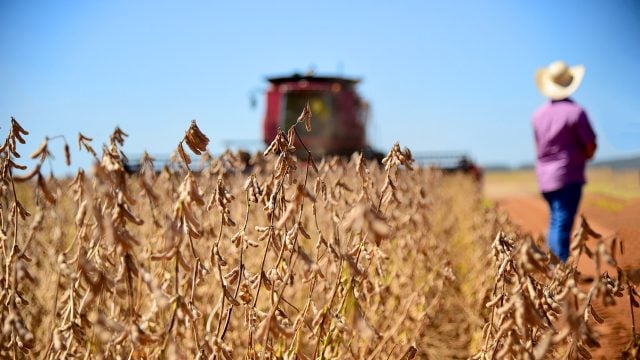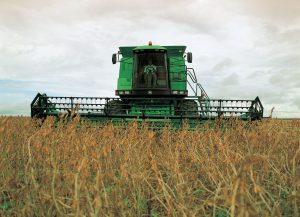Brasília – The soybean is a star of Brazilian agribusiness. In addition to the relevant numbers of soybean output and export, a survey by Brazil’s agricultural research agency Embrapa found that Brazil is slated to become the world’s leading exporter of foodgrains in general, surpassing the United States.
Soybean was the crop that grew the most in Brazil in the past five decades. Indeed, from 1973 to 2023, output increased 38 times over. Besides ensuring trade surpluses, the soybean crop was responsible for occupying the countryside, with the emergence of small municipalities that have become regional development hubs.
According to the United Nations’ Development Programme (UNDP), in 1991 79% of the Brazilian rural municipalities posted a low Human Developed Index (HDI), while 20% had a very low HDI. In 2018, 57% of the rural municipalities had a high HDI, and 38% had a medium HDI.
Since the 2018-19 soybean harvest at over 117 million tonnes, Brazil has led the global ranking as the world’s top producer of this foodgrain. The US and Argentina are right behind. The latest 2022-23 harvest saw over 154 million tonnes, food supply and statistics agency Conab data shows.
Brazil is also leading the exports. Exports in 2023 are expected to touch 97 million tonnes compared to 78 million tonnes in 2022. The last decade has seen a growth trend in exports. Although with some fluctuations, revenue hit a new record in 2022: USD61.3 billion.

As the world’s top exporter, Brazil has also surpassed the US. The country has historically exported approximately 70% of its production. The rest is consumed and industrialized domestically.
The results reflect the increased demand from China and other Asian countries. In 2022 China was the destination of 55 million tonnes of soybean which is expected to significantly rise by the end of 2023’s shipment operations. Since 2013 the Asian giant has taken up over half the value exported – 52.61% in 2022. Groups of countries that stood out as destinations in 2022 were the European Union, Southeast Asia, the Middle East, and East Asia.
The gross domestic product of the supply chain of soybean and biodiesel reached BRL673.7 billion (USD137.19 billion) in 2022, accounting for approximately 27% of the Brazilian agribusiness GDP. Just over a decade ago, this share was just 9%. From 2010 to 2022 the GDP of this chain expanded by 58%, while agribusiness grew by 8%, and the economy by 12%;
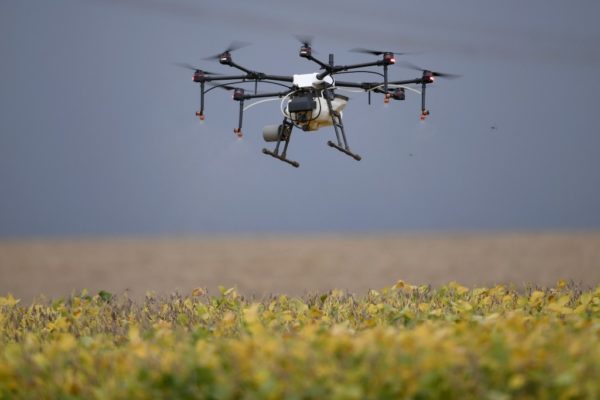
The data is part of a recent study developed by the Center for Advanced Studies on Applied Economics (CEPEA) of the University of São Paulo (USP) in partnership with crushers’ lobby Abiove.
Soybeans are also relevant from a social perspective. The Brazilian foodgrain now feeds 1 billion people across the world. According to farmer lobby Aprosoja, these advancements with soybeans help cement Brazil as a global food supplier, particularly in Asia and Africa.
The concern about food security is a recurring agenda across the world. The UN Food and Agriculture Organization (FAO) warns the world will have to double its food output by 2050 to cater to the demand and says that 40% of this will be supplied by Brazil, the only country in the world that still has vast arable lands, develops good agricultural practices recognized by the UN (crop rotation, no-till farming, crop-livestock-forestry system), provides two to three harvests a year in the same area, and is the country that most protects the indigenous vegetation in the world.
Sweetheart
For farmer Marco Castelli, soybeans are now Brazil’s postcard. “It’s present across the world, providing food security, a source of income for many people, and foreign currency for our country. The agribusiness has contributed to the trade balance surplus for quite a long time now,” he said.
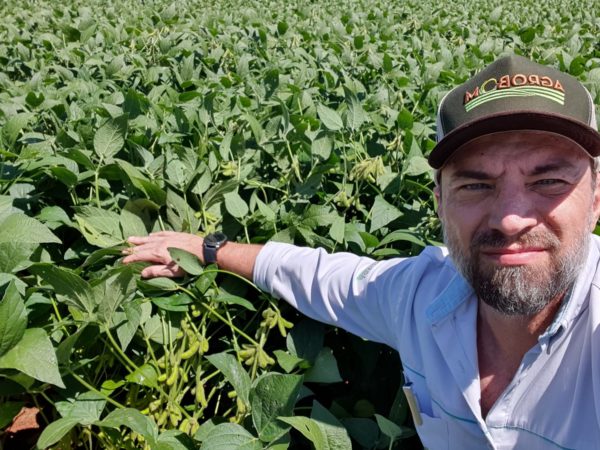
He’s a grower of soybeans, maize, wheat and sorghum in Bom Jesus da Penha, Minas Gerais. “We are pioneers in the production, supply and trade of soybeans in the region. We work with precision farming, and all good environmental, labor, organizational and compliance good practices, with a focus on sustainability,” said Castelli.
According to Aprosoja, the Brazilian soybeans are expected to remain the most cost-effective plant-based protein for the production of meats, milks and eggs and derivatives. According to the lobby, they’re richer in protein and oil content than the soybeans grown in the US and Argentina.
The soybean production allows for the vegetable oil industries, poultry and pork agroindustries, and the agricultural machinery hub to grow. Now startups and multinationals also orbit around the foodgrain crop by developing high-tech products and services.
“This has helped the distribution of wealth and the development of rural cities in the country, thus preventing the rural flight and the continued disorderly occupation of big cities with no infrastructure that cause a major problem for the public administration of these cities,” finished Castelli.
The soybean productive chain now bring together 240,000 farmers and creates jobs in production, industry, commerce and services across small towns and big cities.
Advancements
Embrapa data shows that in just ten years Brazil’s share in the global food market jumped from USD20.6 billion to USD 100 billion, with highlights being meats, soybeans, maize, cotton, and forest products.
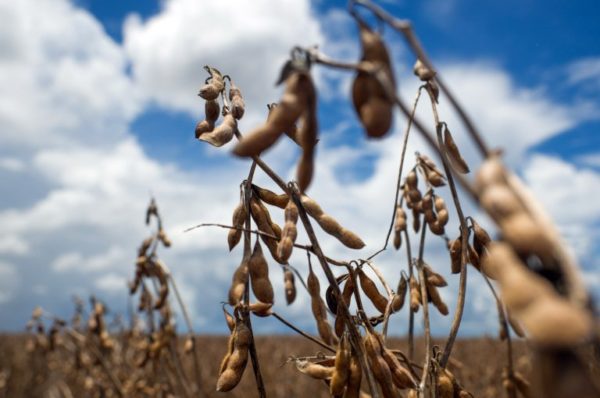
For Adeney de Freitas Bueno, head of Research & Develoment at Embrapa Soja, Brazil has advanced a lot in soybean production, especially because it’s growing more per area, not because it’s growing in more areas. “There is room for Brazil to grow in output without taking down any single tree, by using only grazing lands,” he said. “Soybean production is sustainable, and it needs to be more and more sustainable and prove and improve its sustainability for the foreign market,” says the expert.
In the past five decades, while soybean production increased 38 times over, the cropland grew nineteen-fold, from 2.2 million to approximately 41 million hectares. According to Embrapa Soja, the continued increase in the foodgrain productivity and consequent output growth resulted from the adoption of a series of technologies by Brazilian farmers.
Established on April 16, 1975, in Londrina, Paraná, Embrapa Soja has led research networks to create sustainable solutions to boost soybean output, cut production-related costs and CO2 emissions, and increase the income of farmers.
Embrapa Soja is currently conducting actions in four lines of research: Advanced Genetics, Bioinputs, Low-Carboy Soybeans, and Digital Agriculture. The goal is to increase the share of biological inputs in the control of insect pests and diseases and the promotion of plant growth, as well as substituting non-renewable fertilizer for bio-based inputs.
Furthermore, global talks on reducing greenhouse gas emissions have caused domestic changes. Embrapa Soja has structured a decarbonation scientific protocol to help give credit to companies based on standards and baselines. “The goal isn’t to penalize farmers that do the basics, but we want to give more value to the farmer that adopts high-end technologies and care for the environment,” says Bueno.
As a research and technology transfer corporation, Embrapa aims to spread knowledge. In addition to farmers, Embrapa interacts with cooperatives, state technical assistances, state agencies, and farmers’ association, as these serve as major technology disseminators.
Report by Paula Filizola, especially for ANBA
Translation by Guilherme Miranda





